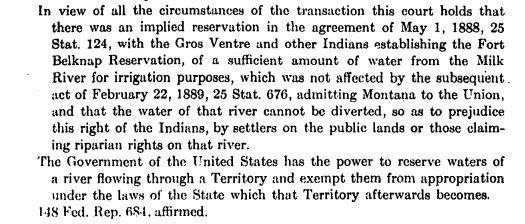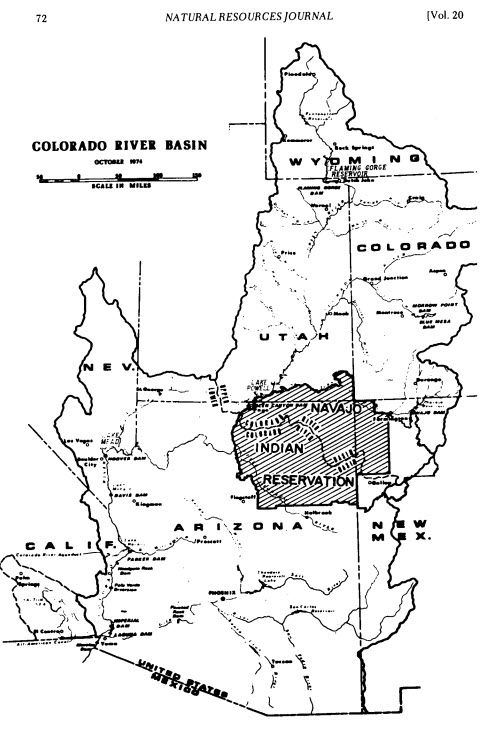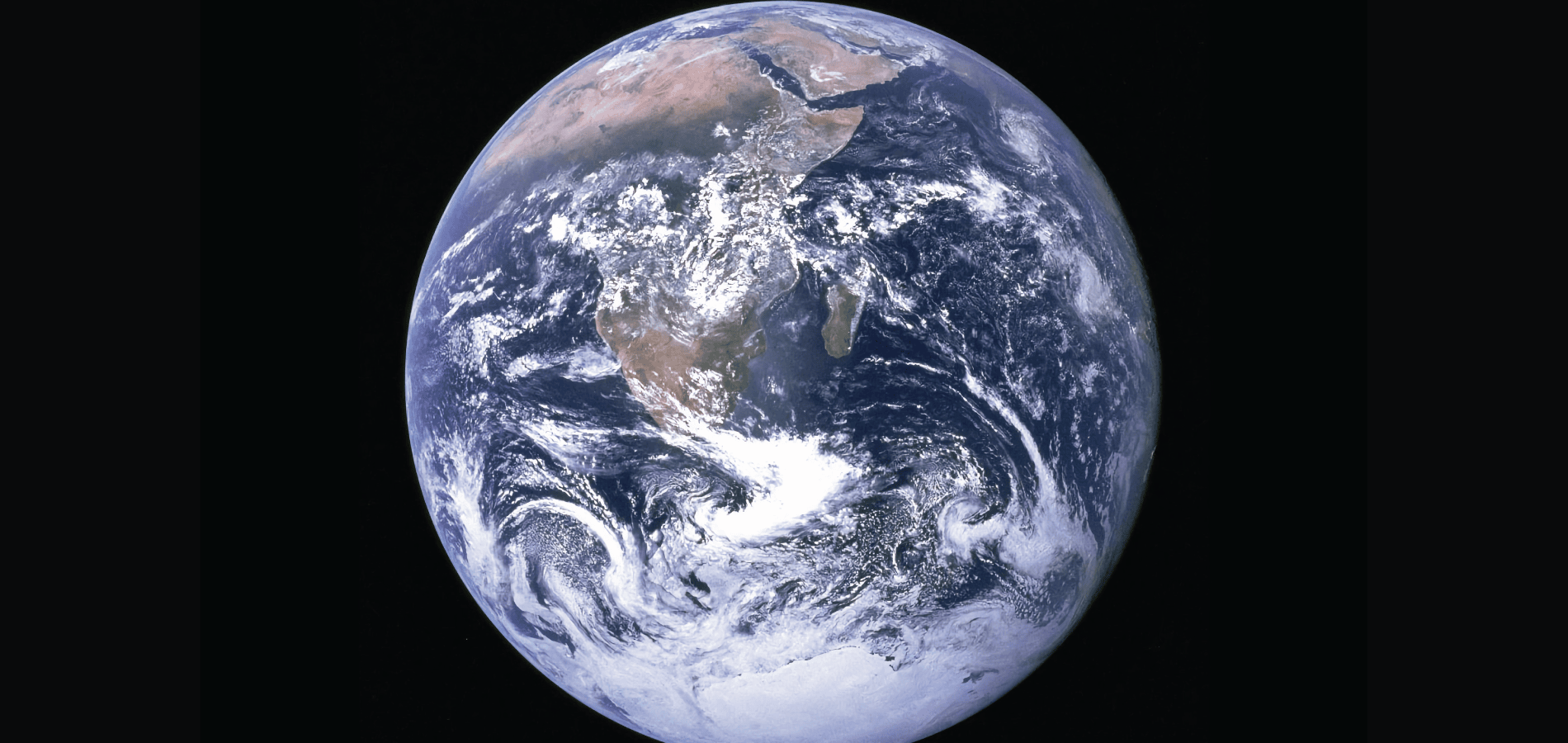In a 5-4 decision,[1]21-1484 U.S. Reports 1 (2023) Arizona et al. v. Navajo Nation et al. This Slip Opinion can be found in HeinOnline’s U.S. Supreme Court Library. the Supreme Court recently ruled against the Navajo Nation in the tribe’s request for the federal government to assess and meet their needs for water. The Navajo live in the arid Southwest, which has been suffering from long-term drought and the impacts of climate change—however, the Court’s decision determined that the U.S. government is not responsible for helping the Nation secure water access. Let’s take a deeper dive into this case, Arizona v. Navajo Nation, using resources within HeinOnline, including our Indigenous Peoples of the Americas: History, Culture & Law and Water Rights & Resources databases.
Historical Background
The basis of this case was the 1868 Treaty of Bosque Redondo[2]Navajoes: Treaty between the United States of America and the Navajo Tribe of Indians, 15 Stat. 667 (1868). This treaty can be found in HeinOnline’s Indigenous Peoples of the Americas: History, Culture & Law and U.S. Treaties and … Continue reading (also known as the Old Paper, or Naal Tsoos Sani) between the Navajo Nation and the U.S. government. This treaty established the boundaries of the Navajo reservation, and the tribe argued that under this treaty, the right to access water is implicitly included within the guarantee to land. The treaty, they argued, established a long-term relationship between the Nation and the federal government, and that as part of that relationship, the federal government had a duty to protect the nation.

The Navajo Nation argued, “Dry western land without water is no home; the agreement makes sense only as a promise of land and water together.”[3]Barbara L. Jones, Does the United State Have a Duty under Existing Treaties to Address the Navajo Nation Reservation’s Water Needs? (21-1484) (22-51), 50 PREVIEW U.S. Sup. CT. Cas. 3 (20). This article can be found in … Continue reading However, the Court determined that nothing in the treaty explicitly states that the federal government is responsible for ensuring that reservations have adequate water—beyond guaranteeing property rights, the government does not hold a duty to tribes beyond what is definitively stated in treaties or statutes. The majority opinion, written by Justice Brett Kavanaugh, stated, “And it is not the judiciary’s role to rewrite and update this 155-year-old treaty.”[4]21-1484 U.S. Reports 1 (2023) Arizona et al. v. Navajo Nation et al. This Slip Opinion can be found in HeinOnline’s U.S. Supreme Court Library.
Precedents Set in Past Court Cases
Winters v. United States (1908)
In this case,[5]Winters v. the United States, 207 U.S. 564, 578 (1908). This case can be found in HeinOnline’s U.S. Supreme Court Library. the Supreme Court defined the water rights of American Indian reservations and asserted that water rights were included in reservation establishment agreements.

Arizona v. California (1964)
The Supreme Court issued an order[6]Arizona v. California et al, 373 U.S. 546, 646 (1963). This case can be found in HeinOnline’s U.S. Supreme Court Library. to settle a dispute over claims to the Lower Basin of the Colorado River. However, the Court stated that this decision did not impact reservations.

United States v. Jicarilla Apache Nation (2011)
The Navajo Nation referenced this case[7]United States v. Jicarilla Apache Nation, 564 U.S. 162, 209 (2011). This case can be found in HeinOnline’s U.S. Supreme Court Library. which established that tribes could seek relief from the federal government when duty was owed by implication.
A Decades-Long Fight for Water
The Navajo Nation lives on a reservation consisting of more than 17 million acres that span across Arizona, New Mexico, and Utah—desert states that have been suffering due to long-term drought. The Navajo have been fighting for secured rights to access water from the Colorado River[8]William Douglas Back & Jeffery S. Taylor, Navajo Water Rights: Pulling the Plug on the Colorado River, 20 NAT. Resources J. 71 (1980). This article can be found in HeinOnline’s Law Journal Library. for more than a century, as evidenced by the Winters v. United States[9]Winters v. the United States, 207 U.S. 564, 578 (1908). This case can be found in HeinOnline’s U.S. Supreme Court Library. decision in 1908.

Arizona v. Navajo Nation[10]21-1484 U.S. Reports 1 (2023) Arizona et al. v. Navajo Nation et al. This Slip Opinion can be found in HeinOnline’s U.S. Supreme Court Library. ended up in the Supreme Court after the Ninth Circuit decided in 2021 that the Nation could bring claims for breach of trust, as their reservation could not exist without water. The Supreme Court decided upon two consolidated appeals, one by the federal government, and another by the states of Arizona, Colorado, and Nevada, and multiple California water districts.
Justice Brett Kavanaugh wrote the majority opinion,[11]21-1484 U.S. Reports 1 (2023) Arizona et al. v. Navajo Nation et al. This Slip Opinion can be found in HeinOnline’s U.S. Supreme Court Library. joined by Chief Justice John Roberts and Justices Clarence Thomas, Samuel Alito, and Amy Coney Barrett.
…It is not the Judiciary’s role to update the law. And on this issue, it is particularly important that federal courts not do so. Allocating water in the arid regions of the American West is often a zero-sum situation…And the zero-sum reality of water in the West underscores that courts must stay in their proper constitutional lane and interpret the law (here, the treaty)
according to its text and history, leaving to Congress and the President the responsibility to enact appropriations laws and to otherwise update federal law as they see fit in light of the competing contemporary needs for water.
Justice Neil Gorsuch wrote the dissenting opinion,[12]21-1484 U.S. Reports 1 (2023) Arizona et al. v. Navajo Nation et al. This Slip Opinion can be found in HeinOnline’s U.S. Supreme Court Library. joined by Justices Elena Kagan, Sonia Sotomayor, and Ketanji Brown Jackson.
The Treaty of 1868 promises the Navajo a “permanent home”….That promise—read in conjunction with other provisions in the Treaty, the history surrounding its enactment, and background principles of Indian law—secures for the Navajo some measure of water rights. Yet even today the extent of those water rights remains unadjudicated and therefore unknown. What is known is that the United States holds some of the Tribe’s water rights in trust. And it exercises control over many possible sources of water in which the Tribe may have rights, including the mainstream of the Colorado River. Accordingly, the government owes the Tribe a duty to manage the water it holds for the Tribe in a legally responsible manner.
What Happens Now?
The Navajo Nation could continue to intervene in other water rights cases, and as Justice Gorsuch pointed out in his dissent, “After today, it is hard to see how this court (or any court) could ever again fairly deny a request from the Navajo to intervene in litigation over the Colorado River or other water sources to which they might have a claim.”[13]21-1484 U.S. Reports 1 (2023) Arizona et al. v. Navajo Nation et al. This Slip Opinion can be found in HeinOnline’s U.S. Supreme Court Library. The Nation can also appeal to Congress to help fund water projects. Based on the decision of the Court in this case, it will be up to legislative bodies to ensure that the Nation is allocated the water they need from the Colorado River.
Dive into Water Rights with One of Our Newest Databases
HeinOnline’s Water Rights & Resources is an affordable, comprehensive, and timely collection that is dedicated to understanding the complex interplay of state and federal laws that govern all aspects of water in society, from municipal use to restoring its pristine condition. Collecting congressional documents, books, legislative histories on major legislation, and Supreme Court briefs on related cases, this database touches on a wide range of water issues, including irrigation, hydropower, riparian rights, water conservation, drinking water quality, and tribal water rights, encompassing the unique water rights issues that span from the Eastern seaboard to the Great Lakes and across the arid West. In the face of so much uncertainty, water rights and how to use our water resources becomes even more vital to understand. This collection is highly editorialized, 100% subject-coded, and contains more than 3,000 titles.
Additionally, you can further your research and explore more of the history of the Navajo Nation and its fight to secure water with the following articles and notes in our Law Journal Library:
- Navajo Water Rights: Pulling the Plug on the Colorado River
- Building with Blinders On: How Policymakers Ignored Indian Water Rights to the Colorado, Setting the Stage for the Navajo Claim
- Mapping the Human Right to Water on the Colorado River
- Indian Water Rights in Theory and Practice: Navajo Experience in the Colorado River Basin
- The Third World in the American Southwest: The Navajo Nation’s Water Crisis and the Failures of Water Law
HeinOnline Sources[+]
| ↑1, ↑4, ↑10, ↑11, ↑12, ↑13 | 21-1484 U.S. Reports 1 (2023) Arizona et al. v. Navajo Nation et al. This Slip Opinion can be found in HeinOnline’s U.S. Supreme Court Library. |
|---|---|
| ↑2 | Navajoes: Treaty between the United States of America and the Navajo Tribe of Indians, 15 Stat. 667 (1868). This treaty can be found in HeinOnline’s Indigenous Peoples of the Americas: History, Culture & Law and U.S. Treaties and Agreements Library databases |
| ↑3 | Barbara L. Jones, Does the United State Have a Duty under Existing Treaties to Address the Navajo Nation Reservation’s Water Needs? (21-1484) (22-51), 50 PREVIEW U.S. Sup. CT. Cas. 3 (20). This article can be found in HeinOnline’s Preview of United States Court Cases database. |
| ↑5, ↑9 | Winters v. the United States, 207 U.S. 564, 578 (1908). This case can be found in HeinOnline’s U.S. Supreme Court Library. |
| ↑6 | Arizona v. California et al, 373 U.S. 546, 646 (1963). This case can be found in HeinOnline’s U.S. Supreme Court Library. |
| ↑7 | United States v. Jicarilla Apache Nation, 564 U.S. 162, 209 (2011). This case can be found in HeinOnline’s U.S. Supreme Court Library. |
| ↑8 | William Douglas Back & Jeffery S. Taylor, Navajo Water Rights: Pulling the Plug on the Colorado River, 20 NAT. Resources J. 71 (1980). This article can be found in HeinOnline’s Law Journal Library. |



